
Something Doesn't Feel Right
Something Doesn't Feel Right provides lessons and resources for teaching on identifying signs of human trafficking at airports and on flights.This lesson looks at real life events where airline employees effectively identified cases of human trafficking. In all cases the airline agents had been specifically trained to identify indicators of human trafficking. The lesson content also addresses the way social media is used by traffickers to recruit victims, specifically youth. There are two 55-minute lessons, depending on the level of your students. it is aimed at older teens, young adults, adults, B2+ (upper intermediate to advanced)Materials include True narrative at airport, student worksheet, autonomous learning resources, transcripts of authentic videos, slides, information about human trafficking and modern slavery, Teacher’s Guide.

The Truth Behind Closed Doors
'The Truth Behind Closed Doors' provides a lesson plan and resources for teaching about domestic servtiude - the exploitation and mistreatment of domestic workers, usually in private homes. Exploitation of domestic workers can happen to migrants domestic workers who have left their fmailies to earn money abroad, but also to workers in private homes in their own country of origin.The lesson plan provides two 55-minute lessons, depending on the level of your students. It is aimed at Older teens, young adults and adults, B2+ (upper intermediate to advances)Materials include: Rose’s personal narrative, student worksheet, autonomous learning resources, information about human trafficking and modern slavery, transcripts of audio recordings, slides, Teacher’s Guide Audio for this lesson plan can be found at https://youtu.be/i28Bev-_sFs
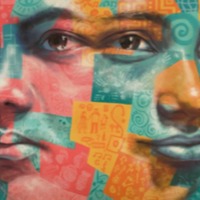
Adama
The 2018 Global Slavery Index Report estimated that approximately 43,000 people were living in modern slavery in Senegal. Based on existing data, Human Rights Watch estimates that more than 100,000 talibés living in residential daaras across Senegal are forced by their Quranic teachers, also known as marabouts, to beg daily for money, food, rice or sugar. Thousands of these children live in conditions of extreme squalor, are denied sufficient food and medical care, and many are also subject to sexual and physical abuse amounting to inhuman and degrading treatment. A ‘Talibé’ is a “disciple” or student of the Quran. Talibés can be adults or children of any age, but the vast majority in Senegal are boys between the ages of 5 and 15, particularly those living at residential daaras. Some talibé children live with family and attend Quranic schools during the day. Most female talibés are day students that do not live at the Quranic schools. Human Rights Watch research suggests that hundreds of talibé children in 2017 and 2018 were victims of human trafficking, which under Senegalese law includes the act of harboring of children in a daara and exploiting them for money through forced begging, as well as the recruitment or transport of children for this purpose.Adama* was 16 when he was sent from Liberia in 2016 to study the Quran with his uncle in Guinea, who then asked permission from his father to send him to study with a Quranic teacher in Senegal.
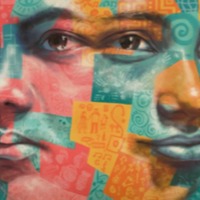
AK A.
There are an estimated 31,000 people living in condition of modern slavery in Israel (GSI 2018). Women from Eastern Europe, China and Ghana, as well as Eritream men and women are subjected to sex trafficking in Israel. People are often lured through the promise of seemingly legitimate jobs, only to be subjected to commercial sexual exploitation upon arrival. AK tells of her experience of being kidnapped and trafficked from Tel Aviv to Hafia in Israel into commercial sexual exploitation.
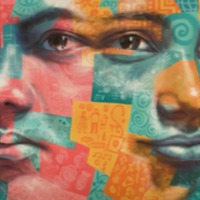
YB
There are an estimated 31,000 people living in condition of modern slavery in Israel (GSI 2018). Women from Eastern Europe, China and Ghana, as well as Eritream men and women are subjected to sex trafficking in Israel. People are often lured through the promise of seemingly legitimate jobs, only to be subjected to commercial sexual exploitation upon arrival. YB was promised a job as a dancer in Israel. Here she tells of her experience of being trafficked across the Egyptian/Israeli boarder.
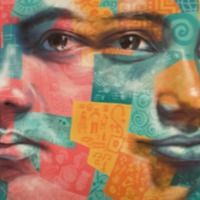
Lena
There are an estimated 31,000 people living in condition of modern slavery in Israel (GSI 2018). Women from Eastern Europe, China and Ghana, as well as Eritream men and women are subjected to sex trafficking in Israel. People are often lured through the promise of seemingly legitimate jobs, only to be subjected to commercial sexual exploitation upon arrival. Lena tells of her experience of sexual exploitation as she was being trafficked across the Egyptian border with Israel.
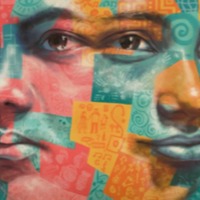
Tatiana
Though Europe has the lowest regional prevalence of modern slavery in the world, it is estimated that 17,500 people are enslaved in the Netherlands. Enslaved people within Europe originate predominantly from Eastern European countries, with forced labour and commercial sexual exploitation remaining the most commonly reported forms of slavery. Cases of forced labour have been reported across Europe in agriculture, forestry, fishery, construction, catering, the textile industry and domestic work. Within cases formally identified by EU authorities the largest proportion of registered human trafficking victims were female, making up around 80% of all victims. Tatiana travelled to the Netherlands with her boyfriend to find work. Upon arrival they were met by who she though was her boyfriend’s friend and taken to a flat where they were going to stay. However, when she got to the flat she was told he had been sold to work as a prostitute. Threatening her family if she refused, Tatiana was forced to work as a prostitute in Amsterdam for 6 months.
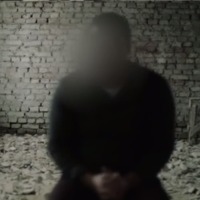
Oleg
Forced labour accounts for 98 percent of cases of modern slavery in Russia. Made up of both Russian and foreign workers, particularly from Tajikistan, Uzbekistan, Azerbaijan and Kyrgyzstan, these people are enslaved in the agricultural and construction sectors, in factories, private homes, forestry, automotive and fishing industries. Russia also stands as the second largest migrant receiving country in the world, these migrant workers often rely on underground networks and intermediaries, not knowing exactly what work they are committing to. Increased unemployment, poverty and demands for cheap labour among Russian citizens, along with the flow of cross-border migration has created new pockets of vulnerability and opportunities for labour exploitation in the country. Wanting to live independently Oleg took a job he found in a newspaper. Oleg was taken from Moscow along with other men to an unknown location. Forced to live and work in unsanitary and dangerous conditions, the men were threatened with violence at any suggestion of resistance. With the help of one of the bus drivers, Oleg was eventually able to escape and make his way back to home.
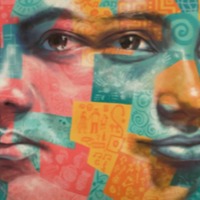
Ah Wang
Ah Wang left China when he was 28, seven years ago. His wife stayed behind while he saw what life was like in the UK. He was misled by the snakeheads arranging his trip, and faced a difficult journey. Ah Wang travelled across countries by car but ‘needed to climb mountains when entering the borders because we had no passports.’ Local guides, part of the snakehead chain, would guide them across borders. They ended up staying in some places for up to a month while the next stages of the journey were planned. The journey ended up taking about a year. When Ah Wang eventually arrived in the UK by boat he was arrested by the police but was released soon after. He thought he had applied for asylum at that time, but several years later discovered that there was no record of his claim.
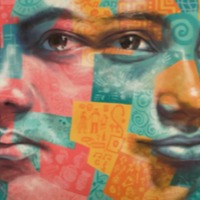
Mariana
Mariana was trafficked into Germany from Ukraine in 1997 at the age of 16. She had accepted the offer of a job: the push for women to leave Ukraine and other old Soviet areas is powerful. They account for up to 90 percent of the unemployed and are usually the first fired. Traffickers abduct an estimated 35,000 women from Ukraine each year. Almost 50 countries serve as destination points throughout Europe and eastward. Germany is one of the most popular destinations in Europe for women trafficked from Ukraine and Russia, though victims also come from Africa (mainly Nigeria) and Asia (mainly Thailand). In the aftermath of her enslavement, Mariana still felt trapped. She couldn’t return to her Ukrainian village because her neighbors believed she had been a “prostitute in Germany,” and pimps were looking for her. She moved to her uncle’s house, then to a friend’s house, seemingly on a perpetual journey from slavery to freedom.
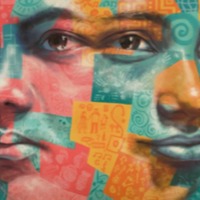
Kimete
There are an estimated 145,000 people living in conditions of modern slavery in Italy (GSI 2018). Italy is a destination, transit, and source country for women, children, and men subjected to sex trafficking and forced labour. Victims originate from Nigeria, Romania, Morocco, China, and other countries. Female victims are often subjected to sex trafficking in Italy after accepting promises of employment as dancers, singers, models, restaurant servers, or caregivers. Romanian and Albanian criminal groups force Eastern European women and girls into commercial sex. Kimete was placed in an orphanage when she was born until she was four years old. After her mother remarried, she was picked up from the orphanage and lived with her family in a ‘shack.’ When she turned 16, her mother and step-father arranged for her to marry a 33 year old man. Her husband suffered mental illness and soon after marrying was hospitalised. While living alone, a salesperson came to buy products from Kimete and said he could marry his nephew. Kimete’s new husband trafficked her into commercial sexual exploitation in Italy.
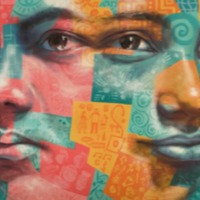
Ada
Born in Albania, Ada was trafficked into Italy, where trafficking victims also arrive from Nigeria, Romania, Bulgaria, China, and South America. One NGO estimates that 48 percent of the prostitutes in Italy are from Eastern Europe. Many women are trafficked into richer Western European countries from the poorer Eastern countries, including Albania. The fall of communism in 1991 led to a rise in organized crime in Albania: in 2001 it was estimated 100,000 Albanian women and girls had been trafficked to Western European and other Balkan countries in the preceding ten years. More than 65 percent of Albanian sex-trafficking victims are minors at the time they are trafficked, and at least 50 percent of victims leave home under the false impression that they will be married or engaged to an Albanian or foreigner and live abroad. Another ten percent are kidnapped or forced into prostitution. The women and girls receive little or no pay for their work,and are commonly tortured if they do not comply.
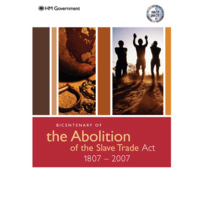
Bicentenary of the Abolition of the Slave Trade Act 1807-2007
The official publication from the British Government in response to the bicentenary included a message from Prime Minister Tony Blair. It set out the history of transatlantic slavery and resistance to it, and featured a calendar of upcoming events for 2007 relating to slavery and abolition. The publication also detailed contemporary efforts to end modern slavery. Later in 2007, 'The way forward: bicentenary of the abolition of the Slave Trade Act 1807-2007' reflected on some of the commemorative activity that had taken place in Bristol, Hull, Liverpool, London and Greater Manchester. With a foreword by the new Prime Minister, Gordon Brown, the theme of the publication was 'Reflecting on the past, looking to the future' and it linked efforts for the abolition of historical and contemporary slavery. The publication also looked to how to tackle inequality and poverty in the UK, Africa and the Caribbean.
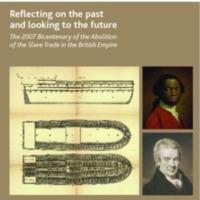
Reflecting on the Past and looking to the future
The official publication to mark the bicentenary from the Department for Culture, Media and Sport (DCMS), setting out the Government response to the commemorations. This included the formation of a 2007 Bicentenary Advisory Group, chaired by the Deputy Prime Minister John Prescott MP, to co-ordinate a national response to the bicentenary and to UNESCO International Slavery Remembrance Day on 23 August. The Group was made up of a number of influential stakeholders to encourage action across the cultural, community and faith sectors and ensure that the bicentenary was made relevant to local communities. Participating organisations included Anti-Slavery International, Amnesty International, the Archbishops Council, Bristol City Council, Churches Together in England, the Equiano Society, the Evangelical Alliance, National Museums Liverpool, National Maritime Museum, Museum of London, the Wilberforce Institute for the study of Slavery and Emancipation and several faith and community leaders.
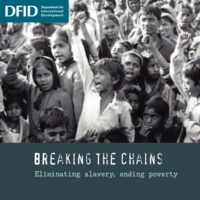
Breaking the Chains: Eliminating slavery, ending poverty
The official publication to mark the bicentenary from the Department for International Development, with a particular focus on the links between poverty and forms of modern slavery around the world.
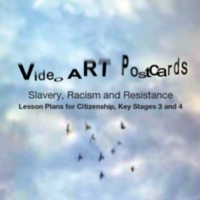
Video ART Postcards
To mark the bicentenary, Manifesta (a not for profit company delivering projects addressing cultural diversity) and the Runnymede Trust (an independent policy research organisation focusing on equality and justice) joined forces to launch a youth and digital media initiative, Video ART (Anti-Racist Trails) Postcards. The project explored connections between slavery, colonialism and contemporary issues of racism and related injustice. In the summer of 2007, two groups of teenagers aged 14-19 from the London Borough of Newham participated in workshops to uncover sites related to historical racism and anti-racism in the West India Docks area of London, assisted by video artists and historians. Using video for self-expression, each participant interpreted this history and heritage by producing a short personal video or 'postcard' - there were 33 videos in total. The videos were made available on an online resource, and a Teacher's Guide was created to be used alongside the website.
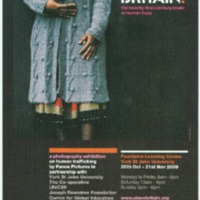
Slave Britain: The 21st Century Trade in Human Lives
This photographic exhibition focused on human trafficking was produced by a partnership of Panos Pictures, Anti-Slavery International, Amnesty International, Eaves and UNICEF. Photographer Karen Robinson’s portraits and tales of women trafficked into prostitution explore the devastating impact on their lives. Also on display were David Rose's panoramic photographs of the ordinary British streets where the stories of modern-day slavery have been played out. The photographs were mounted on a cage-like structure which was specially designed for the exhibition at St Paul's Cathedral. The exhibition was also shown in Edinburgh, Hull and Warsaw, and in 2008, in York.
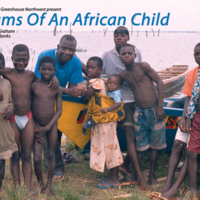
Dreams of an African Child
Dreams of an African Child is a one act play about the 21st century sale of children in the River Volta region of Ghana. It was written by Robin Graham, produced by The Ugly Tree and Greenhouse Northwest Theatre Company, and directed by Toria Banks. The drama centres on the reactions of a rural African family when their teenage son, missing presumed dead, returns home to his family after being sold eight years before. The play was first performed in Accra in 2004, and then in 2008 toured schools and community venues in the North of England and Wales. Workshops were held to discuss the issues of child trafficking raised by the play.
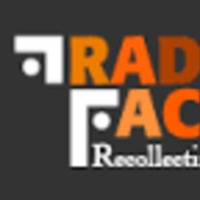
Trading Faces: Recollecting Slavery
Trading Faces: Recollecting Slavery was a consortium project developed by Future Histories (a non-profit organisation set up to maintain archives of African, Caribbean and Asian performing arts in the UK), Talawa Theatre Company (a leading Black-led touring theatre company) and V&A Theatre Collections. Trading Faces made use of archive documents, video and audio material to explore the legacy of the transatlantic slave trade in British performing arts and society. By promoting the use of primary resources, the online exhibition aimed to stimulate creativity, critical thinking, individual responsibility and participation. Highlights of the exhibition included a performance timeline featuring recently archived material from the past 200 years, narratives of slavery from both the past and present and a series of virtual rooms, which explored ritual, religion, carnival and masquerade amongst other aesthetic themes. On the Open Doors section of the site, users contributed material and ideas to promote a critical debate on the subject. As part of the project, the 'Retrace: Identity and Heritage' educational resource pack from Talawa Theatre Company is about the exchange of culture between the UK and other countries linked by the transatlantic slave trade and colonialism, and the impact of these relationships on the performing arts.
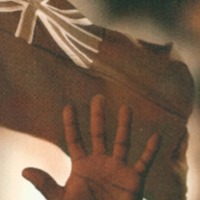
Chasing Freedom: The Royal Navy and the Suppression of the Transatlantic Slave Trade
An exhibition at the Royal Naval Museum at Portsmouth Historic Dockyard explored the role of the Royal Navy squadron established after 1807 to patrol the West African coast and suppress the transatlantic slave trade. Using illustrations, contemporary accounts and original diaries of Royal Navy personnel, the exhibition examined key aspects of the campaign against Atlantic slave traders. It also looked at the Royal Navy's efforts against human trafficking and in the pursuance of humanitarian rights today. There was an accompanying programme of schools workshops and community events. Two specially produced films discussed the legacy of the squadron's work and recreated the abolition debates of the time.